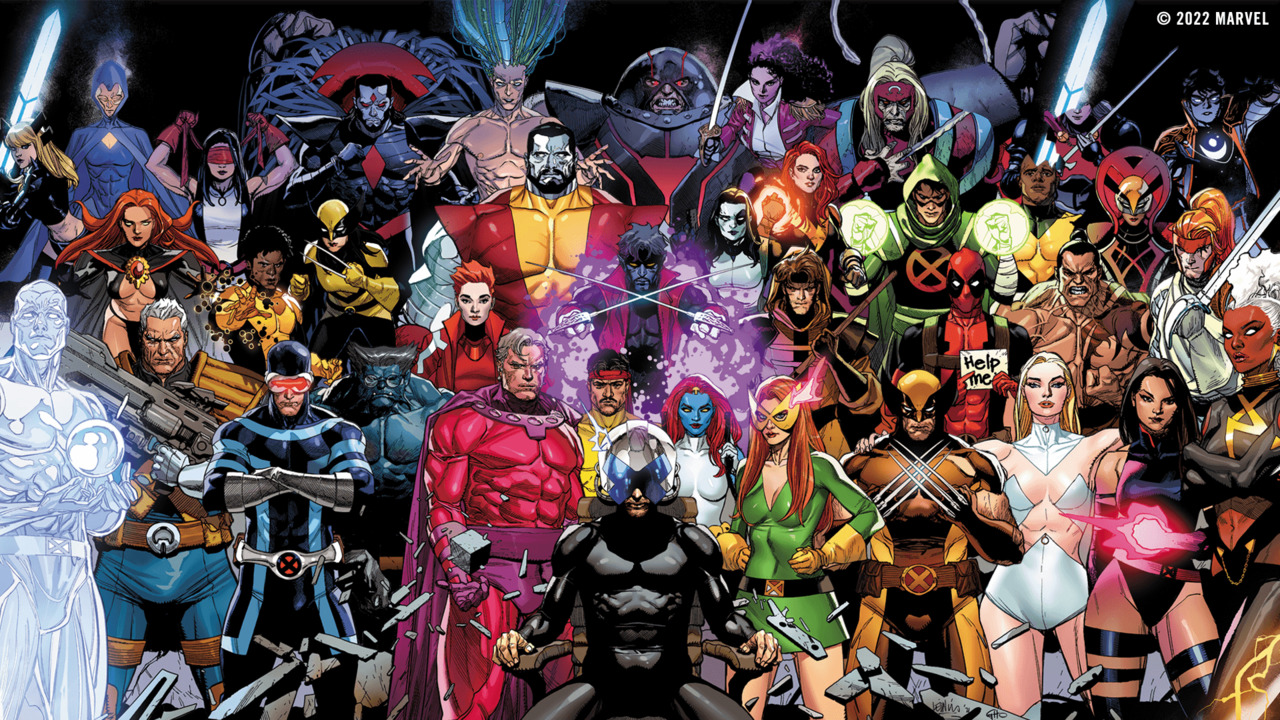How to Optimize Image Caching in Next.js for Blazing Fast Loading Times
Introduction: Images Are the Real Payload By now in our caching journey, we’ve touched nearly every layer that affects performance — from static generation and ISR to edge functions and global CDN strategies. But there’s one heavyweight contender left in the ring: images. If HTML is the skeleton of your Next.js app, images are the muscle — and they’re heavy. In most real-world applications, images account for over 50% of the total page weight. That means no matter how optimized your JavaScript is or how fast your API responds, poorly handled images can choke performance and ruin your Lighthouse scores. That’s why this post is all about image caching and optimization in Next.js, with the latest practices and features up through Next.js 14 and into 15.x. We’ll unpack: How the powerful next/image component handles image transformations and caching. The role of CDN-backed image delivery — including how providers like Cloudinary or Imgix fit into the picture. How to take full control of image loading behavior with headers, priorities, modern remotePatterns, and domain-level optimizations. Whether you're building a blog, an e-commerce store, or a portfolio showcasing rich visuals — this is the performance layer that directly affects your bounce rate, conversions, and SEO. Let’s squeeze every byte of performance from your pixels — the right way. Behind the Scenes of next/image Caching When you use the component in Next.js, you’re leveraging one of the most powerful image optimization pipelines available in any modern framework. It’s not just a wrapper around — it automates transformations, smart format selection, CDN delivery, and cache control. 1. Automatic Image Transformation Next.js generates responsive image variants with smart defaults for modern devices: Resizes images based on screen width and sizes prop. Converts to modern formats (WebP, AVIF*) for smaller file sizes. Adds fetchPriority automatically when priority={true} is used, setting fetchpriority="high" on the tag. Note: AVIF support in self-hosted environments depends on your version of sharp (>= 0.27.0). Vercel handles this automatically. import Image from 'next/image'; export default function HeroSection() { return ( ); } Important: The alt prop is now required for all components. This enforces accessibility best practices starting from Next.js 13. 2. Intelligent Caching Strategy Optimized images are served with powerful cache headers: Cache-Control: public, max-age=31536000, immutable public: Browser and CDN caches are allowed. max-age=31536000: Cache for 1 year. immutable: Assumes the file will never change, skipping revalidation. 3. Granular Source Control with remotePatterns Next.js 14+ recommends using images.remotePatterns in next.config.js for whitelisting external images: // next.config.js module.exports = { images: { remotePatterns: [ { protocol: 'https', hostname: 'cdn.yoursite.com', }, { protocol: 'https', hostname: 'res.cloudinary.com', }, ], }, }; The older images.domains setting is now deprecated. remotePatterns gives you fine-grained control over protocol, host, port, and pathname. By understanding what the next/image component does under the hood, you can make smarter decisions about how to optimize your media strategy — whether you’re deploying to Vercel or self-hosting with your own CDN. Where Images Are Stored and Served From Knowing where optimized images are cached and served from is crucial to maximizing reuse, minimizing latency, and configuring your CDN layer effectively. 1. On Vercel (Edge-Optimized Workflow) First Request: Hits /_next/image API endpoint with query params for size/quality. Image is optimized and cached at the nearest Vercel edge. Subsequent Requests: Served directly from the edge, with no backend involvement. Header: x-vercel-cache: HIT, confirming edge delivery. 2. On Self-Hosted or Custom Deployments If you’re not using Vercel, optimized images are stored in the .next/cache/images directory. On-demand rendering: First request triggers transformation and caches result locally. Subsequent requests: Served from local cache unless manually purged. To serve images from your own CDN, point it at the origin (e.g., Nginx or Node server) and make sure it respects cache headers. 3. CDN Layer + Custom Domain Combine self-hosting with CDN acceleration by exposing optimized images via a custom domain. Instead of using images.domains, now use remotePatterns: module.exports = { images: { remotePatterns: [ { protocol: 'https', hostname: 'cdn.yoursite.com', }, ], }, async rewrites() { return [ { source: '/_next/image', destination: 'https://cdn.yoursite.com/_next/image', },

Introduction: Images Are the Real Payload
By now in our caching journey, we’ve touched nearly every layer that affects performance — from static generation and ISR to edge functions and global CDN strategies. But there’s one heavyweight contender left in the ring: images.
If HTML is the skeleton of your Next.js app, images are the muscle — and they’re heavy. In most real-world applications, images account for over 50% of the total page weight. That means no matter how optimized your JavaScript is or how fast your API responds, poorly handled images can choke performance and ruin your Lighthouse scores.
That’s why this post is all about image caching and optimization in Next.js, with the latest practices and features up through Next.js 14 and into 15.x. We’ll unpack:
- How the powerful
next/imagecomponent handles image transformations and caching. - The role of CDN-backed image delivery — including how providers like Cloudinary or Imgix fit into the picture.
- How to take full control of image loading behavior with headers, priorities, modern
remotePatterns, and domain-level optimizations.
Whether you're building a blog, an e-commerce store, or a portfolio showcasing rich visuals — this is the performance layer that directly affects your bounce rate, conversions, and SEO.
Let’s squeeze every byte of performance from your pixels — the right way.
Behind the Scenes of next/image Caching
When you use the
1. Automatic Image Transformation
Next.js generates responsive image variants with smart defaults for modern devices:
- Resizes images based on screen width and
sizesprop. - Converts to modern formats (WebP, AVIF*) for smaller file sizes.
- Adds
fetchPriorityautomatically whenpriority={true}is used, settingfetchpriority="high"on the
Note: AVIF support in self-hosted environments depends on your version of sharp (>= 0.27.0). Vercel handles this automatically.
import Image from 'next/image';
export default function HeroSection() {
return (
<Image
src="/hero-banner.jpg"
width={1920}
height={1080}
alt="Homepage Banner"
priority
/>
);
}
Important: The alt prop is now required for all components. This enforces accessibility best practices starting from Next.js 13.
2. Intelligent Caching Strategy
Optimized images are served with powerful cache headers:
Cache-Control: public, max-age=31536000, immutable
- public: Browser and CDN caches are allowed.
- max-age=31536000: Cache for 1 year.
- immutable: Assumes the file will never change, skipping revalidation.
3. Granular Source Control with remotePatterns
Next.js 14+ recommends using images.remotePatterns in next.config.js for whitelisting external images:
// next.config.js
module.exports = {
images: {
remotePatterns: [
{
protocol: 'https',
hostname: 'cdn.yoursite.com',
},
{
protocol: 'https',
hostname: 'res.cloudinary.com',
},
],
},
};
The older images.domains setting is now deprecated. remotePatterns gives you fine-grained control over protocol, host, port, and pathname.
By understanding what the next/image component does under the hood, you can make smarter decisions about how to optimize your media strategy — whether you’re deploying to Vercel or self-hosting with your own CDN.
Where Images Are Stored and Served From
Knowing where optimized images are cached and served from is crucial to maximizing reuse, minimizing latency, and configuring your CDN layer effectively.
1. On Vercel (Edge-Optimized Workflow)
-
First Request:
- Hits
/_next/imageAPI endpoint with query params for size/quality. - Image is optimized and cached at the nearest Vercel edge.
- Hits
-
Subsequent Requests:
- Served directly from the edge, with no backend involvement.
- Header:
x-vercel-cache: HIT, confirming edge delivery.
2. On Self-Hosted or Custom Deployments
If you’re not using Vercel, optimized images are stored in the .next/cache/images directory.
- On-demand rendering: First request triggers transformation and caches result locally.
- Subsequent requests: Served from local cache unless manually purged.
To serve images from your own CDN, point it at the origin (e.g., Nginx or Node server) and make sure it respects cache headers.
3. CDN Layer + Custom Domain
Combine self-hosting with CDN acceleration by exposing optimized images via a custom domain. Instead of using images.domains, now use remotePatterns:
module.exports = {
images: {
remotePatterns: [
{
protocol: 'https',
hostname: 'cdn.yoursite.com',
},
],
},
async rewrites() {
return [
{
source: '/_next/image',
destination: 'https://cdn.yoursite.com/_next/image',
},
];
},
};
- Ensure your CDN (Cloudflare, AWS CloudFront, etc.) is set to "Cache Everything" for
/image/*routes. - Respect the
Cache-Controlheader set by Next.js or override if necessary.
4. Lifecycle Recap
| Step | Vercel Deployment | Custom Hosting + CDN |
|---|---|---|
| Image Requested | /api/_next/image?... |
Same |
| Cache Miss? | Transforms at edge | Transforms at origin |
| Cached Copy Location | Vercel Edge |
.next/cache/images + CDN |
| Response Header | x-vercel-cache: HIT |
Depends on your CDN |
Using Custom Image Loaders
While next/image's built-in optimizer is great for many use cases, some scenarios call for offloading image delivery and transformation to external services like Cloudinary, Imgix, or Akamai. Custom loaders give you full control over image URLs and transformation logic.
1. Define a Custom Loader
Create a loader function that generates URLs to your image CDN:
// lib/cloudinaryLoader.js
export default function cloudinaryLoader({ src, width, quality }) {
return `https://res.cloudinary.com/demo/image/upload/q_${quality},w_${width}/${src}`;
}
2. Configure next.config.js
// next.config.js
module.exports = {
images: {
loader: 'custom',
loaderFile: './lib/cloudinaryLoader.js',
},
};
If you’re using a custom loader, remotePatterns is not required for those image sources handled by the loader. However, it’s still required for any other external URLs used in directly.
3. Use the Loader in a Component
import Image from 'next/image';
import cloudinaryLoader from '../lib/cloudinaryLoader';
export default function ProductImage() {
return (
<Image
loader={cloudinaryLoader}
src="product.jpg"
width={800}
height={600}
alt="Product"
/>
);
}
4. Use unoptimized for Pass-Through Images
If you want to bypass optimization entirely (e.g., for SVGs or already optimized assets), set unoptimized:
<Image
src="/static/logo.svg"
alt="Logo"
width={200}
height={100}
unoptimized
/>
When to Use a Custom Loader
- You already use a dedicated image CDN with transformation APIs.
- You want to avoid backend processing and serve images from globally distributed URLs.
- You need more advanced transformations than
next/imagesupports out of the box.
Custom loaders keep the same
Controlling Caching with Headers and Loader Settings
While Next.js provides excellent defaults for image caching, aligning these with your own CDN or client behavior often requires more explicit control. This section shows how to override caching headers and handle advanced strategies across self-hosted and cloud environments.
1. Default Caching Headers
Next.js automatically sets the following on optimized images:
Cache-Control: public, max-age=31536000, immutable
This is great for long-lived assets, but if you need quicker revalidation or stale support, you can override headers based on your use case.
2. Custom Headers in next.config.js
module.exports = {
async headers() {
return [
{
source: '/_next/image',
headers: [
{
key: 'Cache-Control',
value: 'public, max-age=86400, stale-while-revalidate=604800',
},
],
},
];
},
};
Works well with the Pages Router. For App Router, use middleware or edge functions.
3. Self-Hosted or Custom Server Headers
if (req.url.startsWith('/_next/image')) {
res.setHeader('Cache-Control', 'public, max-age=604800, stale-while-revalidate=259200');
}
4. Invalidation and Cache Busting
URL Versioning:
<Image
src={`/images/banner.jpg?v=${Date.now()}`}
alt="Banner"
width={1920}
height={1080}
/>
API Invalidation:
await fetch('https://api.cloudflare.com/client/v4/zones/YOUR_ZONE/purge_cache', {
method: 'POST',
headers: {
'Authorization': 'Bearer YOUR_TOKEN',
'Content-Type': 'application/json',
},
body: JSON.stringify({ files: ['https://yourdomain.com/_next/image?url=/images/banner.jpg&w=1920'] }),
});
Some CDNs also support tag-based purging.
5. Loader Cache Behavior
- Ensure loader-generated URLs are cacheable.
- Set TTL policies in the CDN.
Lazy Loading and Priority Strategy
Efficiently managing how and when images load is essential to delivering a fast, visually stable experience — especially on slower connections or mobile devices. Next.js provides powerful built-in tools for lazy loading and prioritizing critical assets. Here’s how to leverage them effectively.
1. Lazy Loading by Default
By default, all images rendered with
<Image
src="/gallery/photo.jpg"
alt="Gallery Photo"
width={800}
height={600}
/>
You don’t need to manually enable lazy loading. It’s baked in — unless overridden by priority.
2. The priority Prop for Above-the-Fold Images
Use priority={true} for the first 1–2 images that are above the fold and contribute to your LCP (Largest Contentful Paint).
<Image
src="/hero.jpg"
width={1600}
height={900}
alt="Hero Banner"
priority
/>
This does two things:
- Adds a
to preload the image as early as possible. - Automatically applies
fetchpriority="high"to the
You can also manually control this via fetchPriority="high", but priority={true} is the preferred way.
3. Using sizes to Help the Browser
If you’re using responsive layouts or fill, providing an accurate sizes prop helps the browser select the right image variant earlier, minimizing CLS (Cumulative Layout Shift).
<Image
src="/banner.jpg"
fill
alt="Responsive Banner"
sizes="(max-width: 768px) 100vw, 50vw"
priority
/>
This ensures your LCP image is both quickly downloaded and correctly sized across devices.
4. Blur Placeholder + Lazy Loading
Next.js allows blurred low-resolution placeholders for better UX while waiting for images to load:
<Image
src="/profile.jpg"
width={400}
height={400}
alt="Profile"
placeholder="blur"
blurDataURL="data:image/jpeg;base64,..."
/>
This works seamlessly with lazy loading and helps avoid layout shifts.
5. What Changed in Next.js 14+
-
priorityautomatically setsfetchpriority="high"— no need to add it manually. - The
onLoadingCompletecallback has been deprecated. UseonLoadinstead.
<Image
src="/headshot.jpg"
width={300}
height={300}
alt="Author"
onLoad={() => console.log('Image loaded')}
/>
Best Practices
- Only use
priorityfor critical images. Don’t overuse it. - Always define
width,height, or usefillto prevent layout shifts. - Provide a correct
sizesvalue for better responsive performance. - Combine blur placeholders with lazy loading for smoother image loads.
With smart use of lazy loading, prioritization, and responsive hints, you can significantly improve the speed and polish of your Next.js application — especially for media-rich pages.
Using Image CDN with Your Custom Domain
Serving images from a dedicated CDN subdomain gives you better control over caching, faster initial loads, and clean separation from your main domain’s asset pipeline.
1. Setup a CDN Domain
Start by creating a subdomain (e.g., cdn.yoursite.com) that points to your CDN endpoint:
-
DNS: Add a CNAME record:
cdn.yoursite.com → your-cdn-provider-endpoint.com Confirm the CNAME resolves correctly with tools like
dig,nslookup, or your DNS provider dashboard.
2. Update next.config.js with remotePatterns
Use remotePatterns to explicitly allow image loading from your CDN domain:
// next.config.js
module.exports = {
images: {
remotePatterns: [
{
protocol: 'https',
hostname: 'cdn.yoursite.com',
},
],
},
async rewrites() {
return [
{
source: '/_next/image',
destination: 'https://cdn.yoursite.com/_next/image',
},
];
},
};
3. Configure CDN Rules (Cloudflare / AWS CloudFront)
-
Cloudflare
- Create a Page Rule: Cache everything under
/cdn.yoursite.com/_next/image* - Enable "Origin Cache Control" so it respects the headers sent by Next.js
- Create a Page Rule: Cache everything under
-
AWS CloudFront
- In "Behaviors": enable caching based on query strings
- Add
/_next/image*route to pass to your backend or S3 bucket - Respect origin headers, or set TTLs if overriding
4. Benefits of Custom Domain CDN
- Performance: Isolating image requests improves parallel downloads and reduces cookie overhead.
- Cache Control: You can set rules specific to images independent of HTML or JS assets.
- Analytics: Separate domain-level logging helps with traffic segmentation and observability.
- Security: Avoids leakage of authentication tokens in cookies if cookies are scoped to your primary domain only.
5. Validate with Headers
Check that requests are being served from the CDN and that caching headers are honored:
curl -I https://cdn.yoursite.com/_next/image?url=/banner.jpg&w=1200
Look for Cache-Control, x-cache, or cf-cache-status: HIT depending on your provider.
With this setup, your images are now being served with edge efficiency, custom logic, and cache isolation — ideal for scalable Next.js projects.
Performance Gains and Trade-offs
Optimizing and caching images can yield dramatic improvements in load times — but it’s important to understand both the tangible benefits and the potential trade-offs before you decide on a particular strategy.
Real-World Benchmarks
The numbers below reflect a mid-sized marketing site running Next.js on Vercel, with ~20 images per page and an average unoptimized image weight of ~150 KB:
| Metric | Baseline (No Optimization) | Next.js Optimizer + CDN | Custom Loader (Cloudinary) + CDN |
|---|---|---|---|
| Total Image Payload | 3 MB | 1.2 MB (–60%) | 900 KB (–70%) |
| Largest Contentful Paint (LCP) | 2.5 s | 1.2 s (–1.3 s) | 1.0 s (–1.5 s) |
| First Contentful Paint (FCP) | 1.8 s | 1.0 s (–0.8 s) | 0.9 s (–0.9 s) |
| Lighthouse Performance Score | 65 | 88 | 92 |
Common Trade-offs
Every optimization introduces complexity or cost. Here’s what to watch for:
-
Build-time vs runtime transforms
- Pre-building images increases build duration and disk usage under
.next/cache/images. - On-demand transforms add latency on first request, though caches mitigate subsequent hits.
- Pre-building images increases build duration and disk usage under
-
Third-party costs
- Services like Cloudinary and Imgix charge for transformations, bandwidth, and storage.
- Monitor usage to avoid unexpected bills.
-
Cache invalidation complexity
- Long
max-age, immutableheaders mean stale images persist until you version URLs or purge the CDN. - Automated purging adds operational overhead (webhooks, scripts, or CI/CD steps).
- Long
-
Over-optimization risks
- Aggressive compression can introduce artifacts. Always verify visual quality at your chosen quality setting (e.g., 75–85).
- Excessive
priorityusage negates lazy-loading benefits and may saturate network capacity.
Recommendations
- Start with Next.js’s default optimizer on a modern CDN. Measure your real traffic patterns and page weights.
- If you reach a performance plateau or require advanced imaging (dynamic cropping, face detection), introduce a custom loader.
- Automate cache invalidation through versioned URLs or CI/CD hooks.
- Continuously monitor both performance metrics (LCP, FCP) and your CDN/image-service bills to balance speed and cost.
By understanding these gains and trade-offs, you can make informed choices that align with both your performance goals and operational constraints.
Conclusion: Optimizing Images, Elevating Performance
Images aren’t just aesthetic—they're strategic. Optimizing image caching in your Next.js app is one of the most high-impact changes you can make to improve load time, SEO, and overall user experience.
We’ve covered everything from the internals of next/image, to using CDNs, custom loaders, and lazy loading with precision. Whether you're scaling an e-commerce storefront or shipping a blazing-fast portfolio, these techniques will help you deliver beautiful visuals without sacrificing performance.
Key Takeaways:
- Use
next/imagewithremotePatternsinstead of the deprecateddomainssetting. - Lazy load everything by default, but use
priorityfor critical LCP images. - Serve images via a custom CDN domain for advanced caching and analytics.
- Monitor cache headers (
x-vercel-cache,cf-cache-status) and automate invalidation. - Be intentional with quality settings and responsive image strategies (
sizes,fill, blur placeholders).
With the right image caching strategy, your Next.js site won’t just look good — it’ll feel fast, global, and frictionless.
This wraps up the ninth post in our caching series. In the next and final part, we’ll explore the differences between server-side caching and client-side caching in Next.js — and how to combine both for the ultimate performance stack.
Stay tuned for:
Next Post: “Server-Side Caching vs Client-Side Caching in Next.js: Best Practices for Performance”
Catch up on the series:
Let’s connect:









































































































































































![[The AI Show Episode 146]: Rise of “AI-First” Companies, AI Job Disruption, GPT-4o Update Gets Rolled Back, How Big Consulting Firms Use AI, and Meta AI App](https://www.marketingaiinstitute.com/hubfs/ep%20146%20cover.png)


























































































































![[DEALS] The Premium Python Programming PCEP Certification Prep Bundle (67% off) & Other Deals Up To 98% Off – Offers End Soon!](https://www.javacodegeeks.com/wp-content/uploads/2012/12/jcg-logo.jpg)














































































































































_Aleksey_Funtap_Alamy.jpg?width=1280&auto=webp&quality=80&disable=upscale#)
_Sergey_Tarasov_Alamy.jpg?width=1280&auto=webp&quality=80&disable=upscale#)









































































































![Apple Foldable iPhone to Feature New Display Tech, 19% Thinner Panel [Rumor]](https://www.iclarified.com/images/news/97271/97271/97271-640.jpg)
![Apple Developing New Chips for Smart Glasses, Macs, AI Servers [Report]](https://www.iclarified.com/images/news/97269/97269/97269-640.jpg)
![Apple Shares New Mother's Day Ad: 'A Gift for Mom' [Video]](https://www.iclarified.com/images/news/97267/97267/97267-640.jpg)
![Apple Shares Official Trailer for 'Stick' Starring Owen Wilson [Video]](https://www.iclarified.com/images/news/97264/97264/97264-640.jpg)











































































































